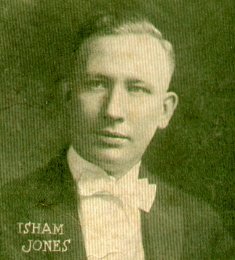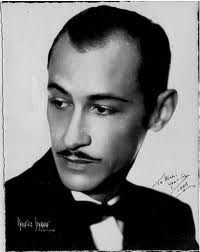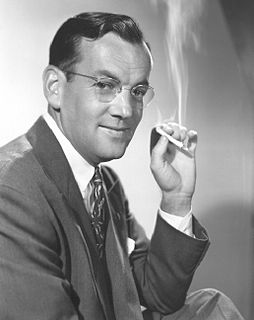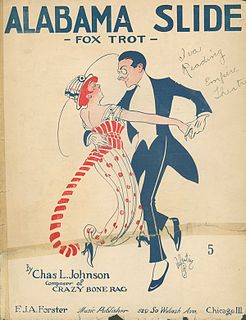
The Original Dixieland Jass Band (ODJB) was a Dixieland jazz band that made the first jazz recordings in early 1917. Their "Livery Stable Blues" became the first jazz record ever issued. The group composed and recorded many jazz standards, the most famous being "Tiger Rag". In late 1917 the spelling of the band's name was changed to Original Dixieland Jazz Band.

Benjamin David Goodman was an American jazz clarinetist and bandleader known as the "King of Swing".
This is a list of notable events in music that took place in the year 1923.
The 19th Annual Grammy Awards were held on February 19, 1977, and were broadcast live on American television (CBS). They recognized accomplishments by musicians from the year 1976.

Joe Williams was an American jazz singer. He sang with big bands such as the Count Basie Orchestra and the Lionel Hampton Orchestra and with his combos. He sang in two films with the Basie orchestra and sometimes worked as an actor.
Jerome Richardson was an American jazz musician, tenor saxophonist, and flute player, who also played soprano sax, alto sax, baritone sax, clarinet, bass clarinet, alto flute and piccolo. He played with Charles Mingus, Lionel Hampton, Billy Eckstine the Thad Jones/Mel Lewis Big Band, Kenny Burrell, and later with Earl Hines' small band.

Isham Edgar Jones was an American bandleader, saxophonist, bassist and songwriter.

John Jean Goldkette was a jazz pianist and bandleader.

James Columbus "Jay" McShann was a jazz pianist and bandleader. He led bands in Kansas City, Missouri, that included Charlie Parker, Bernard Anderson, Ben Webster, and Walter Brown.

Theodore "Fats" Navarro (September 24, 1923 – July 6, 1950 was an American jazz trumpet player. He was a pioneer of the bebop style of jazz improvisation in the 1940s. He had a strong stylistic influence on many other players, including Clifford Brown.

Albert George "Al" Hibbler was an American baritone vocalist, who sang with Duke Ellington's orchestra before having several pop hits as a solo artist. Some of Hibbler's singing is classified as rhythm and blues, but he is best seen as a bridge between R&B and traditional pop music. According to one authority, "Hibbler cannot be regarded as a jazz singer but as an exceptionally good interpreter of twentieth-century popular songs who happened to work with some of the best jazz musicians of the time."

Orie Frank Trumbauer was one of the leading jazz saxophonists of the 1920s and 1930s. His main instrument was the C-melody saxophone, a now-uncommon instrument between an alto and tenor saxophone in size and pitch. He also played alto saxophone, bassoon, clarinet and several other instruments.

Roland Pembroke Hanna was an American jazz pianist, composer, and teacher.
"I Ain't Got Nothin' but the Blues" is a 1937 song composed by Duke Ellington, with lyrics written by Don George.

Between 1938 and 1944, Glenn Miller and His Orchestra released 266 singles on the monaural ten-inch shellac 78 rpm format. Their studio output comprised a variety of musical styles inside of the Swing genre, including ballads, band chants, dance instrumentals, novelty tracks, songs adapted from motion pictures, and, as the Second World War approached, patriotic music. Non-instrumental songs featured Miller's various vocalists, generally Ray Eberle or Marion Hutton before 1940, with Tex Beneke, vocal group The Modernaires, and Skip Nelson all making studio vocal appearances after the turn of the decade. Beginning with An Album of Outstanding Arrangements in 1945, this collection has been repackaged into various album formats over time with release on 78 rpm, 10 and 12 inch LP, 7 inch 45 rpm, compact cassette, 8-track, compact disc (CD), and digital formats.

"Riverboat Shuffle" is a popular song composed by Hoagy Carmichael, Irving Mills and Dick Voynow, and with lyrics added later by Carmichael and Mitchell Parish. First recorded by Bix Beiderbecke and The Wolverines in 1924, it was Carmichael's first composition and would become a Dixieland standard. The Wolverines released the song as a Gennet 78, 5454-A, Matrix #11854 524, in 1924. Bix Beiderbecke recorded a second version of the song in 1927 with Frankie Trumbauer and His Orchestra which was released as an Okeh 78, 40822. Carmichael would later write many popular jazz standards, including "Stardust" (1927), "Georgia on My Mind" (1930) and "Lazy River" (1931).

"Livery Stable Blues" is a jazz composition copyrighted by Ray Lopez (né Raymond Edward Lopez; 1889–1979) and Alcide Nunez in 1917. It was recorded by the Original Dixieland Jass Band on February 26, 1917, and, with the A side "Dixieland Jass Band One-Step" or "Dixie Jass Band One-Step", became widely acknowledged as the first jazz recording commercially released. It was recorded by the Victor Talking Machine Company in New York City at its studio at 46 West 38th Street on the 12th floor – the top floor.
"That Old Gang of Mine" is a 1923 popular song composed by Ray Henderson with lyrics by Billy Rose and Mort Dixon, and published by Irving Berlin, Inc. It was introduced in the Ziegfeld Follies of 1923 by the vaudeville duo Van and Schenk. The song became a million-seller.

"This Love of Mine" is a popular American song that was first recorded in 1941 by Tommy Dorsey with Frank Sinatra and The Pied Pipers. Sinatra wrote the words and Sol Parker and Hank Sanicola wrote the music.
















